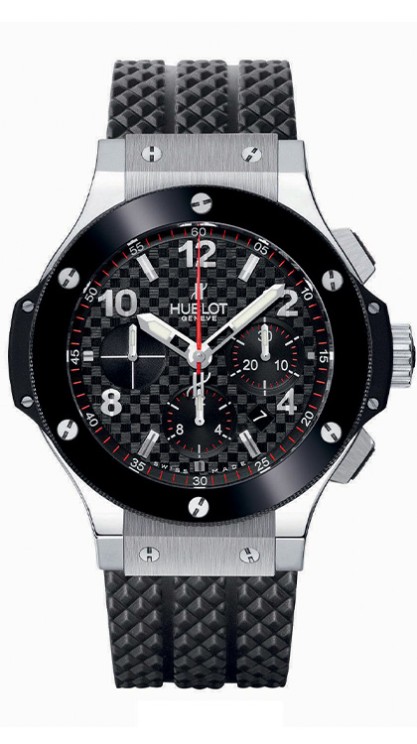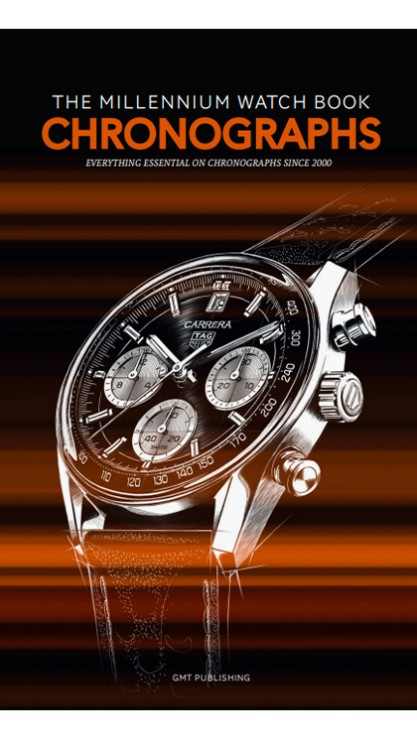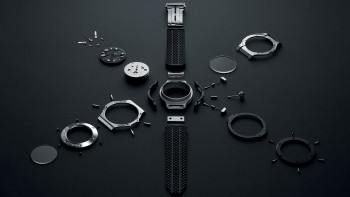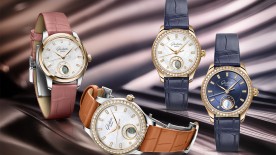Miami vice
It was very much the era of Miami Vice — the legendary series packed with fashion, Caribbean sunshine, big cars and more. The watch launched at that time by Carlo Crocco is interesting in more ways than one. For one thing, it threw down the gauntlet to a watchmaking world that was somewhat sluggish in those days. Moreover, in spite of its name, the brand had quite a distinctive DNA, much more Mediterranean than Swiss. And on top of all that, the watch released by MDM Genève featured several design innovations, including the use of a new kind of rubber strap — a first for a watch positioned in a luxury segment. I’m sure the new arrival would have had a huge impact had it been worn by Ricardo Tubbs or Sonny Crockett!
All the ingredients were there for it to be an immediate flop — or a resounding success. The watch was to become the latter.
It’s worth pointing out that back then, the brand’s name was MDM (the three letters have stood for various things over time) and it was the model itself that was called the Hublot, because of the screwed bezel’s resemblance to a porthole (hublot in French) — another MDM hallmark. Of course, the shape wasn’t the first of its kind; it’s not hard to find other well-known watches with a design inspired by the same part of a ship.
I recall trying on steel and gold MDMs many times when on holiday with my family in the south of France. Over and above its maritime theme, what I immediately liked about the watch was its offbeat and — again — slightly provocative side.
Just like Sonny Crockett — a police detective driving a Ferrari and wearing a white suit made by a top designer — the MDM was decidedly not part of a slumbering watchmaking establishment, choosing instead to burst onto the scene and upset conventional stereotypes in a proud assertion of difference.
You either love it or you hate it.

The 'in-yer-face' Big Bang
Fast forward to 2004, when Jean-Claude Biver — who no longer needs any introduction — bought a stake in MDM and took the helm of the company; if you liked Miami Vice, you’ll be sure to love Fast & Furious! The new CEO soon grasped the brand’s potential and that of the Hublot: a combination of materials rarely used together (gold and rubber), an uncompromising design, along with an unashamedly different style. In the space of just a few months, a new model was ready to be unveiled at Baselworld 2005: the Big Bang chronograph.
As is always the case when a brand launches a new watch, the name deserves some attention. While the term ‘Big Bang’ may immediately bring space to mind, the name actually refers more precisely to the original explosion where everything began. The new Big Bang was impressive; there’s nothing at all discreet about it. It had the familiar bezel to be found on MDM models, a rubber strap, as well as a complex case replete with different angles. The timepiece used many different materials and many different finishes.
And once again, this Hublot set out to be provocative. It was positioned on a premium segment in direct defiance of more classic, more established chronographs. It had an ETA movement, a choice that was much-criticised despite the fact that all the brands — including the biggest ones — have used OEM chronograph movements for their watches at some point.
All of this was evidence that the new Hublot chronograph was a disruption — perhaps even a threat.
The day after
The new Hublot Big Bang chronograph was a phenomenal success, taking the brand into another dimension. In addition, it brought with it a new form of disruptive marketing that came as a complete surprise to a watchmaking industry still thinking mainly in terms of technical standards.
As well as being a horological triumph, the Big Bang was a sociological success: Jean-Claude Biver had intuitively foreseen the change in the market and proffered a response that was on target, even if it was a little extreme. The Big Bang range has been expanding ever since. MDM became Hublot — and joined the LVMH family a few years later.
Hublot has pursued its marketing strategy, always turning up where it’s least expected. Ignoring criticism, the brand has gone from strength to strength with the Big Bang chronograph as its flagship. In that respect alone, THE Big Bang fully deserves to be remembered as one of the most influential chronographs in watchmaking. It’s a watch for pleasure — almost guilty pleasure given how much of a conversation-starter it is. The Big Bang has become gentrified these days, but the first black version is still my favourite. 2005 was the year in which Christopher Nolan released his acclaimed Batman Begins, one of the most sophisticated Batman movies.
The black ceramic Hublot Big Bang is an embodiment of the nighttime superhero. Angular, made using contemporary materials, sporting both a high-tech look and sturdy innards, it’s still the model that did the most to shake up contemporary watchmaking. It was neither expected nor welcome — and that’s precisely what I find so endearing about it.
It’s said that you can’t make an omelette with breaking eggs, and the Big Bang is a case in point.

Hublot Big Bang
CASE: steel or rose gold, water resistant to 100m
DIAMETER: 44.5mm
MOVEMENT: self-winding mechanical chronograph, 40-hour power reserve
FUNCTIONS: hours, minutes, small seconds display, chronograph, date
DIAL: sunburst black with vertical satin finish steel applique hour-markers
STRAP: adjustable black natural rubber, rose gold and 316L steel Hublot folding clasp
LAUNCH YEAR: 2005
This year GMT Magazine and WorldTempus have embarked on the ambitious project of summarising the chronograph since the year 2000 in The Millennium Watch Book - Chronographs, a big, beautifully laid out coffee table book. This article is an extract. The Millennium Watch Book - Chronographs is available in both French and English here.








